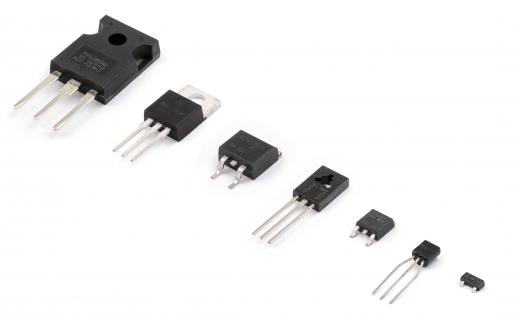Bias voltage typically refers to an electrical charge applied to the gate or base of a transistor or electronic vacuum tube. This applied voltage causes the component to become conductive, thereby passing electrical current through its collector and emitter stages. The amount of current passed through the component is also directly related to the amount of bias voltage applied. Depending on the type of transistor, this voltage is either positive or negative, and is referred to as a forward or reverse bias. These voltages are, therefore, used to switch electronic components on or off, keep them active, or control the amount of current passing through them.
Transistors typically have three points: a collector, an emitter, and a base or gate. The path between the collector and emitter may be seen as the road used by electrical current to pass through the transistor. The base would then be a turnstile or gate across that road used to control the traffic, and the bias voltage would be the guard that opens the gate to allow traffic to pass and controls the volume of traffic passing through. The direction of current flow is also a variable factor in transistor theory; common base, collector, or emitter configurations allow for various end results to be attained. In all configurations though, it is this voltage that marshals the flow of traffic.

By controlling this voltage, circuit designers can not only allow for switching functions with transistors and vacuum tubes, but they can also direct the amount of current passed to other parts of the circuit. This characteristic allows the gain factor or amplification of a transistor to be very finely controlled. Whether the transistor is switched on by the applied voltage or kept off until such time as it needs to conduct can be controlled by applying forward or reverse bias voltages. This effect is achieved by adjusting the polarity of the applied voltage, which allows for a large margin of flexibility in how transistors are applied in electronic circuits.
Transistors and vacuum tubes are some of the most basic and fundamentally important building blocks of the science of electronics. Their unique, flexible switching or current controlling characteristics are critical to most electronic circuits and have formed the basis of much of the advancement that has been made in the field of electronic engineering. This extremely useful controllable switching ability is made possible by the controlled application of bias current and makes it an essential part of transistor theory.
